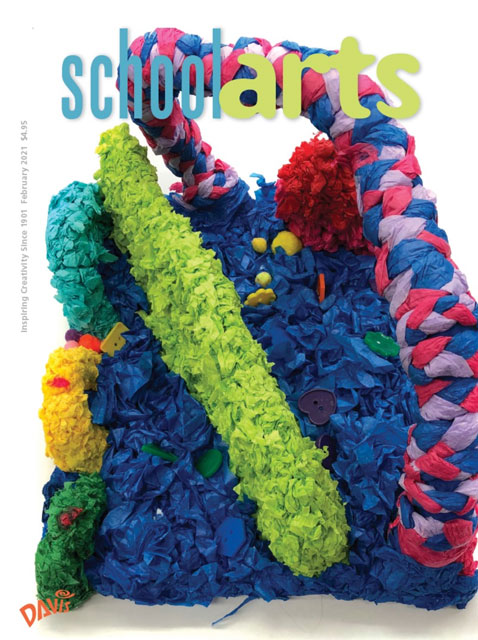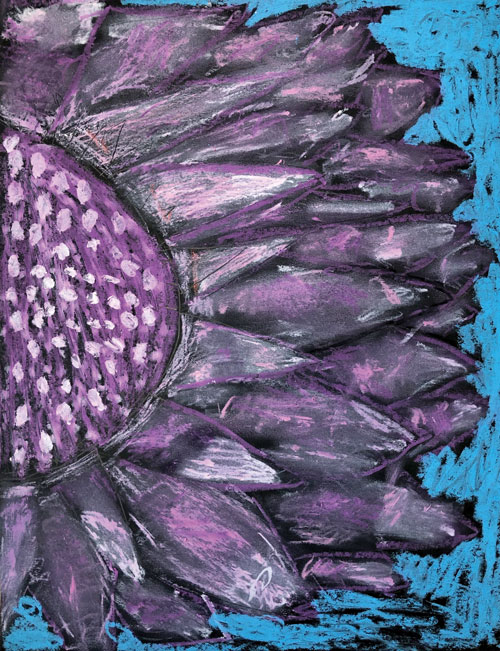 |
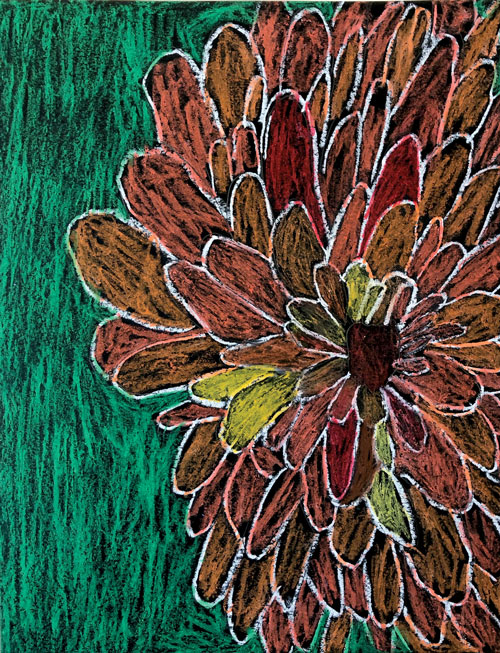 |
| Top: Isabella U., musk thistle. Bottom: Ezra B., orange agoseris. |
Students’ answers usually range from “It’s easy” to “It’s pretty” to “People can tell what it is.” Aha! Such respectable answers and yet so confining. Can you imagine the flowers we could draw if we didn’t care so much about these conditions?
One of the biggest challenges I face with students is helping them take risks. Risk-taking in drawing might include not being afraid of what other people think, drawing somewhere other than in the center of the page, drawing large so the subject is not recognizable, and distorting to abstraction. I find that these are all risks that can be taken in a simple lesson about Georgia O’Keeffe.
Why O’Keeffe?
So, Georgia O’Keeffe, again? Sometimes I’m conflicted. The lifelong learner in me beckons to keep my curriculum fresh, and students love the edginess of contemporary art. They think it’s fascinating that artist Heather Dewey-Hagborg is making sculpted faces based on DNA extracted from used chewing gum, and Berndnaut creates and places ephemeral clouds in unusual places as works of art.
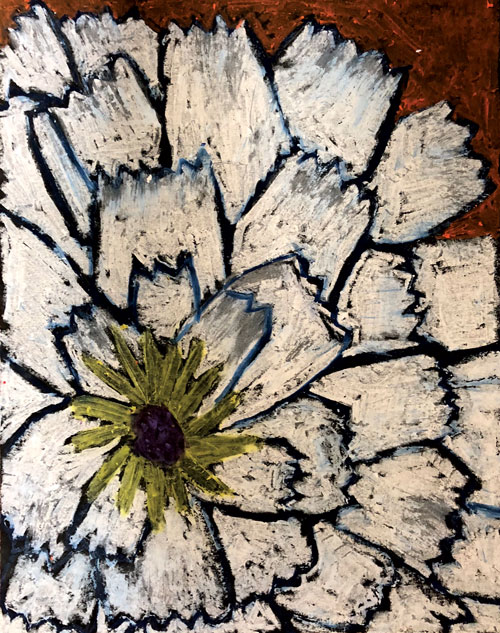 |
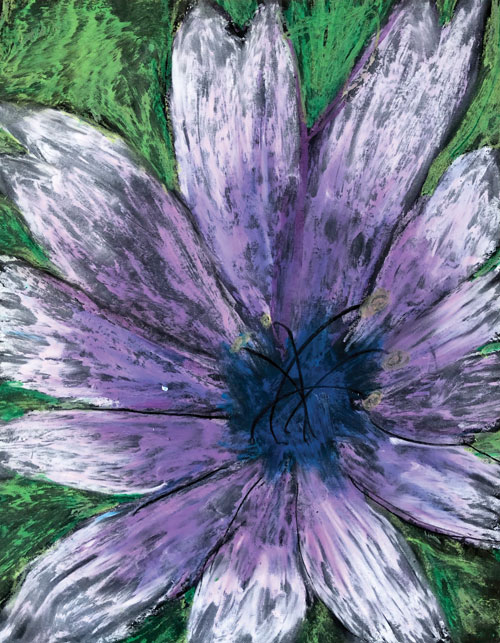 |
| Top: Evie O., gravel ghost. Bottom: Brynn J., chicory. |
So why, after all these years, do I return to O’Keeffe to pull fourthgraders out of drawing stagnation? Because of the creative freedom that can be learned by drawing a simple flower while thinking like O’Keeffe. Her perspective was contemporary. Maybe students don’t always need to do something different as much as they need to think differently.
Step One: Observation
We looked at ten paintings by O’Keeffe that included large abstract flowers, such as Abstraction White Rose and Blue Flower, and bone paintings such as Pelvis Series, Red with Yellow, and Horse’s Skull on Blue. Students made comments regarding O’Keeffe’s contemporary style, especially considering it was made about ninety years ago.
After being empowered by the art of O’Keeffe, students vowed to draw large, even if it meant their flowers might end up abstract. Some students even prepared responses in case someone couldn’t recognize what they drew, such as “It doesn’t matter,” or “It’s my art and I like it.”
Step Two: Utah Wildflowers
We looked at native wildflowers to research and draw, which also connects to Utah’s fourth-grade science core. We found a great website (see Resource) with lots of botanical information about local wildflowers and exquisite photographs.
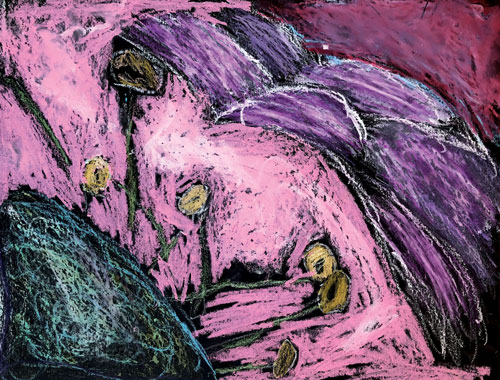 |
| Wood’s rose, fourth-grade wildflower study. |
Each student chose a wildflower. It helped to limit flower choices to avoid too much decision time. I showed students how they could look at just one interesting part of the wildflower to draw instead of the entire thing.
Drawing BIG
Students practiced drawing huge. They first drew the flowers with pencil “as light as a feather” on black construction paper. They considered offsetting the center of the flower instead of putting it in the middle as they would typically. I didn’t make this a requirement, but I asked them to at least consider it.
We made a quick check to make sure the drawings were large enough. This was really hard for some students! I was impressed with the improvement in observational skills that accompanied this exercise.
Working with Oil Pastels
Next, I demonstrated how to layer colors with oil pastels. Students zoomed in on their pictures to notice subtle color changes. Once again, observation was essential. Even seemingly allwhite petals had hints of light blues or violet. The end results were incredible!
Step Three: Exhibition
The display of our Utah wildflowers knocked the socks off parents at the student art show. Students gained both confidence and essential artmaking skills that will last a lifetime. Even after all these years, I’ll still keep Georgia on my mind and in my curriculum.
Christine Palmer is an art teacher at Brookside Elementary School in Springville, Utah. christinesthings@gmail.com
NATIONAL STANDARD
Connecting: Relating artistic ideas and work with personal meaning and external context
RESOURCEE
The American Southwest: americansouthwest.net
View this article in the digital edition.
